Katahdin sheep can be a great and profitable addition to your farm.
This breed is among the list of sheep breeds that offer numerous advantages for farmers, whether they are homesteaders or large-scale sheep farms.
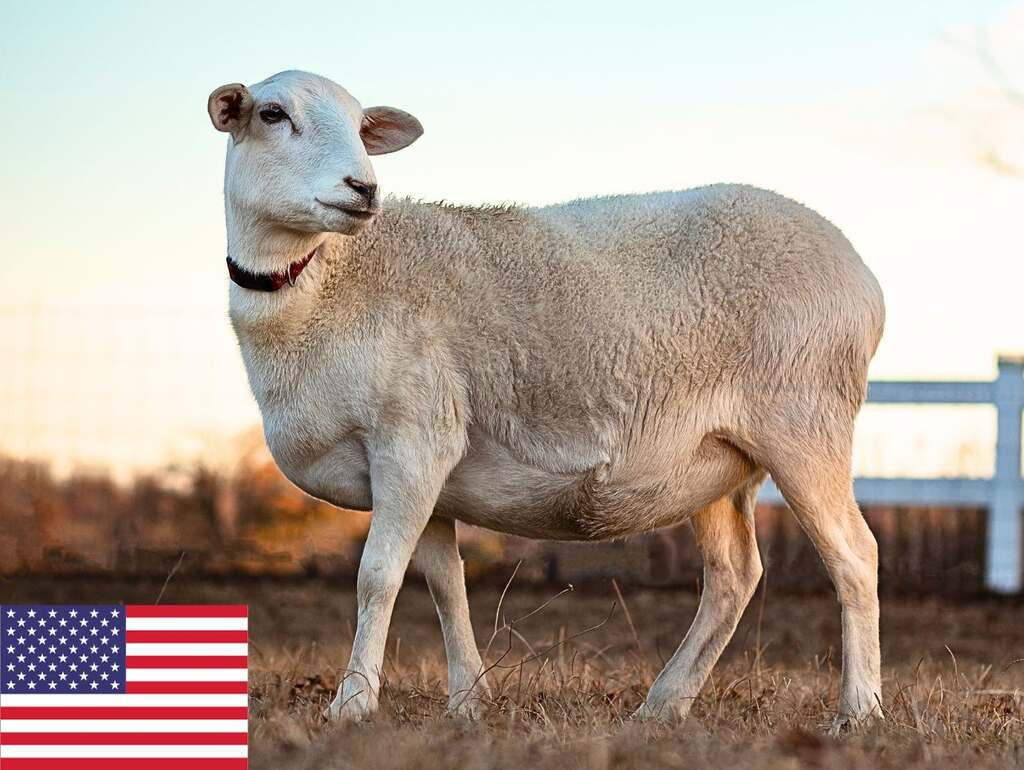
Low maintenance, high meat quality, resistance to parasites, disease resistance, breeding flexibility, market demand, and easy handling are just seven of the strong reasons to choose this sheep.
Contents
Short summary
| Good for: | homesteaders, small and large farms |
| Type: | for meat |
| Size: | medium to large size |
| Color: | white, red, brown, black, or even patterns like spots |
| Fleece: | do not have wool |
| Lifespan: | 10 to 12 years |
| Growth Rate: | grow slowly |
| Weight: | ewe: 120 to 160 lbs (55 to 73 kg), ram: 180 to 250 lbs (82 to 115 kg) |
| Sexual maturity: | 8 to 10 months |
| Slaughtered age: | 8 to 9 months |
| Litter size: | 2-4 lambs per year |
| Price: | $600 to $850 for a lamb and $400-$500 for a sheep |
A Katahdin sheep is a domestic, hair sheep breed that originated in Maine, United States, in 1950.
Characteristics
Size
A Katahdin sheep has a medium to large size.
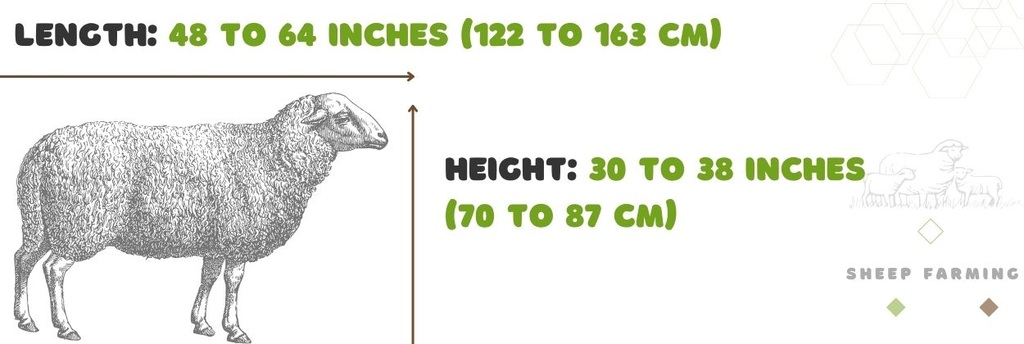
It is larger than sheep like Hebridean or Jacob, but also smaller than Suffolk, Dorper, or Romney.
An adult sheep measures between 30 to 38 inches (70 to 87 cm) in height and 48 to 64 inches (122 to 163 cm) in length.
Color
They are white, but it is also common to have other colors such as red, brown, black, or even patterns like spots.
Fleece
These sheep do not have wool since they are a hair sheep breed.
Their coat consists of hair, which differs in texture from wool. It has a hairy texture similar to other sheep breeds like St. Croix, Dorper, or Barbados.
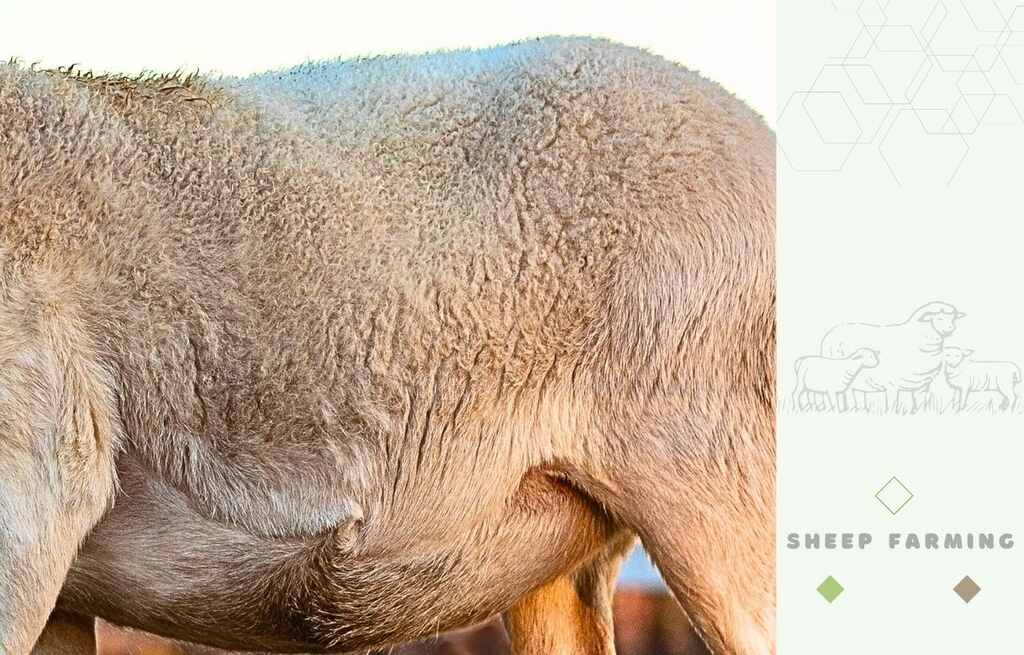
The length of their hair varies depending on the season. During the warm season, their hair is shorter, while in the cold season, it becomes thicker and grows longer.
Also, in the cold season, they develop two types of coats: an outer one that is coarser and an undercoat that is finer in texture.
Head, Face, Eyes
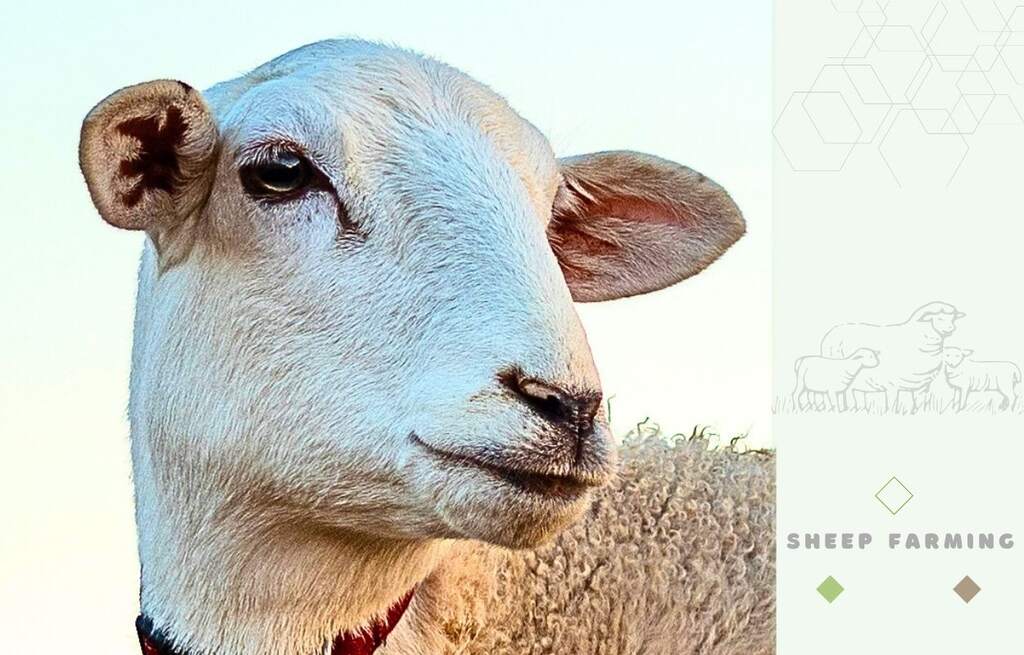
The head is of medium size compared to the rest of its body and is covered with short hair.
Their face is also of medium size and is covered in hair that matches the same color as the rest of their body.
Their eyes are well set apart and have an almond shape, which is a result of the horizontal pupils. The color of their eyes can vary, but most of them have brown or dark brown eyes.
Ears
These sheep have medium-sized ears that are erect and horizontal, not floppy, and covered with hair.
Horns
Katahdin sheep do not have horns.
Although these sheep are a polled breed, rams can develop small ‘scurs,’ which are solid formations on the head that typically don’t exceed 3 inches in length.
Neck, Chest, Shoulder

The neck is of medium length, very muscular, and extends straight into the shoulder. In rams, the neck is covered with a mane of hair, while in sheep, it is not.
The shoulder part is well-muscled and broad, especially in rams. The shoulder extends smoothly to the back.
The chest is also well muscled, very deep and wide. Katahdin sheep are less broad-chested than rams.
Back and Ribs
The back is long, wide, deep, and has strong muscles. It can also be described as smooth and broad. As the back, the ribs are wide and deep too.
Legs
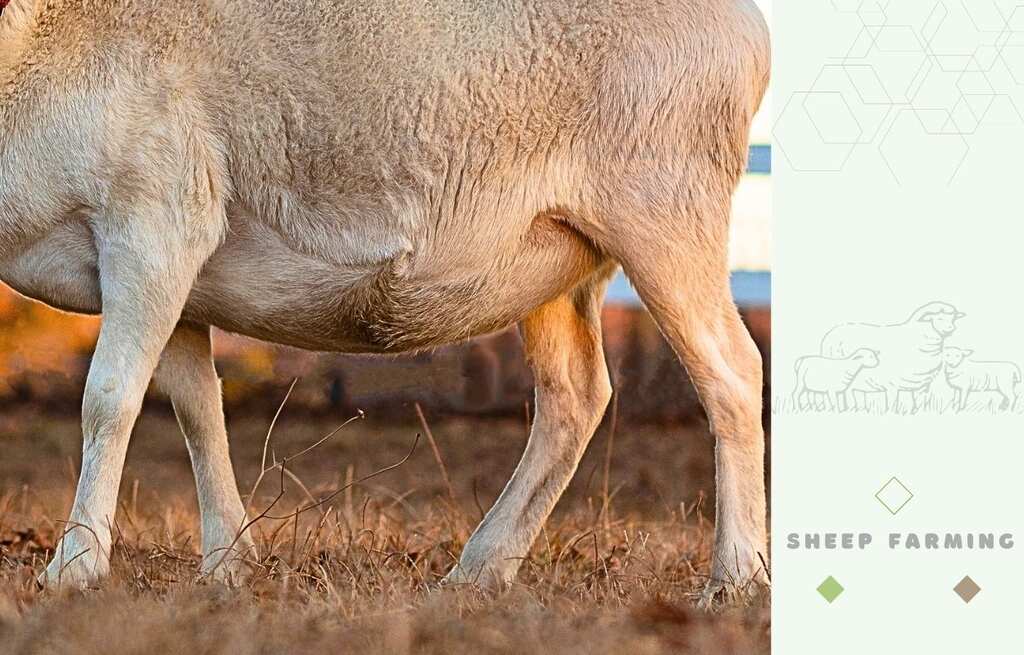
The legs have a balanced bone structure of medium length and an overall robust aspect. They are straight and with a medium length that fits with the size of the body.
The thigh muscles are sturdy, with clear muscular development on the both inner and outer thighs, extending to the shank.
Tail
The tail is hairy, and its length can vary from sheep to sheep.
These sheep do not require tail docking.
Scrotum, Udder
The rams have a pair of large, well-developed testicles, while the ewes have a strong and well-balanced udder with two teats that are firmly attached.
Lifespan
Katahdin sheep can live for 10 to 12 years.
This places them in the category of sheep with a good lifespan. But, like any other sheep or animal, lifespan is highly influenced by factors such as genetics, diet, and farm practices.
Growth Rate
How fast do they grow?
Katahdin sheep have a slower growth rate compared to other meat sheep breeds, such as Hampshire, for example.
But if it is to compare their growth rate to that of other hair breeds, Katahdin and Dorper are some of the fastest-growing hair sheep breeds, especially in North America.
Katahdin sheep reach their final weight by the age of 1.5 years old, but they become sexually mature earlier, at about 8 to 10 months.
With certain sheep breeds like Katahdin, their growth rate is significantly influenced by genetics, as well as by the latitude where they are raised.
Farmers have noticed that these sheep raised at high latitudes or in the northern regions tend to grow faster and gain weight more quickly because the days are longer there and grass grows faster.
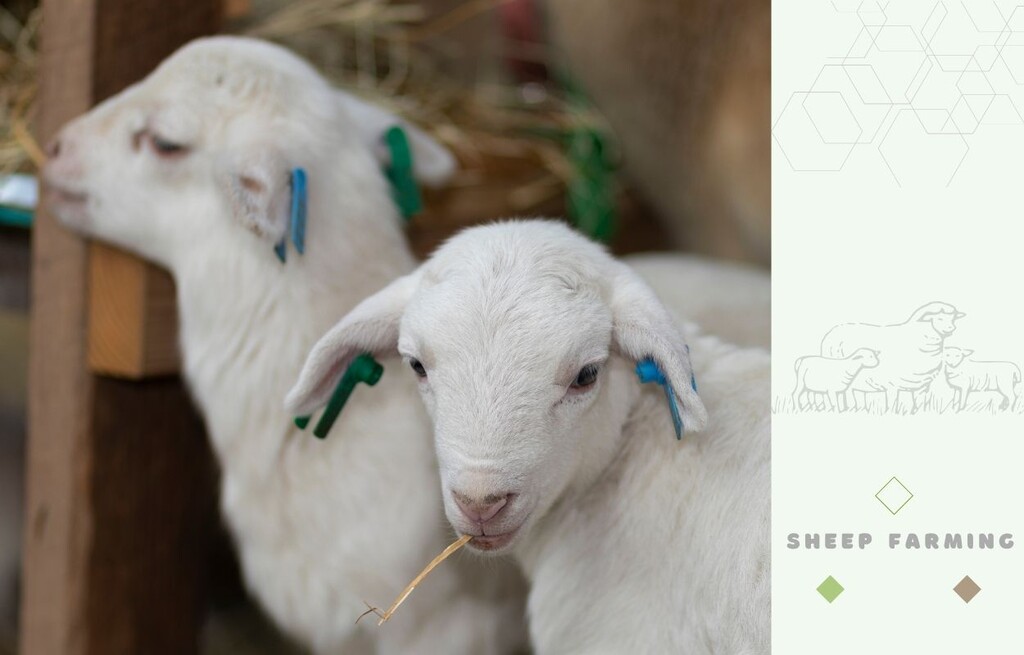
On the other hand, sheep raised at lower latitudes have slower growth rates due to shorter daylight periods than those in the north.
Also, the grass quality in the north is also different from that in the south. In the north, it has a higher protein content and lower fiber content compared to the grass in the south.
Weight
Katahdin sheep weigh between 120 to 250 lbs (55 to 115 kg).

The ewes have a lower weight than the rams.
An adultewe weighs 120 to 160 lbs (55 to 73 kg). On the other side, an adult ram has a weight of 180 to 250 lbs (82 to 115 kg).
A lamb has a weight of 8 lbs (3.6 kg) at birth and can reach 80 to 100 lbs (36 to 45 kg) until 8 months of age, depending on the diet.
Slaughtered age
Katahdin sheep can be slaughtered at the age of 8 to 9 months when they have an average weight of 90 lbs (40 kg). This yields about 40 lbs (18 kg) of meat after processing.
Since their weight may vary depending on their living conditions, you can also wait until the sheep reaches 70 to 75% of its final adult weight and butcher it.
Shearing
These sheep do not have to be sheared.
Their bodies are covered only with hair, making them a low-maintenance sheep breed in terms of grooming compared to wool breeds like Rambouillet or high-maintenance sheep breeds like Valais Blacknose.
These sheep also have the ability to shed their coat when the weather gets warmer. If you want your sheep to feel more comfortable during shedding, you can simply use a brush and gently groom them, but it is not necessary.
Temperament and Behaviour
Katahdin sheep are calm and docile, making them suitable for raising even by those with no experience in handling sheep.
They are social animals and are accustomed to living in flocks for safety reasons.
When living in flocks, these sheep feel safer as they can better protect themselves from predators and other dangers. They are always on alert, ready to react if they hear or see something in the bushes.
As part of their flocking behavior, these sheep set up a structure within the flock. One member of the flock is chosen as their leader, which they follow within the group.
This sheep breed interacts very well with humans, especially if they are raised around them. They are not as timid or shy as some other sheep breeds.
Grazing is one of the natural behaviors of these sheep.
Another behavior that defines them is the so-called “goat behavior”.
Why?
Because similar to goats, they stand on their hind legs to reach leaves on low-hanging branches.
The only time Katahdin sheep change their behavior is when ewes try to protect their lambs or when rams are in the breeding season and compete for the attention of the ewes.
Usage
Katahdin sheep are used for meat.
This is the main usage of these sheep, but some farmers choose to use them for dairy and land management purposes too.
Meat
These sheep are good for meat due to their size and very prominent and heavily musculature on their body, especially in the legs and loin area.
Their carcass quality also scores very high even though they are not as large as other meat sheep breeds.
The meat of Katahdin sheep is exceptionally lean, with lower cholesterol content compared to lamb meat from breeds like Hampshire or Dorset.
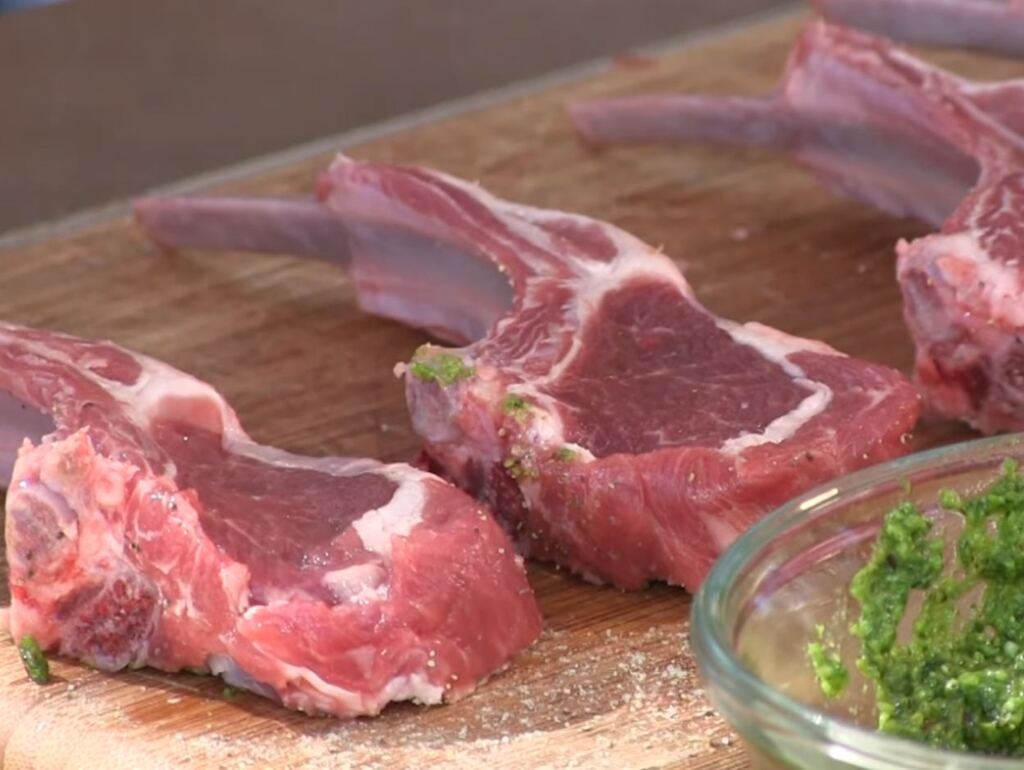
The taste of their meat is also very mild and different from lamb meat taste in general, to the point where some might not even recognize it as lamb.
The meat is also very tender and juicy even though it is lean.
Some say that the different taste of the Katahdin meat comes from their coat. The fact that these sheep are hairy and do not have wool means that they do not also produce lanolin.
The lanolin found in the wool is the one that gives lamb’s meat smell and stronger flavor.
The meat of these sheep is used in different meat production products such as sausages, but it is also used as fresh cuts for grilling or roasting.
Dairy
Katahdin sheep are not a dairy sheep breed, but they are used for dairy purposes due to their ability to produce a high quantity of milk for their lambs.
The milk from these sheep has high nutritional value and is utilized by farmers to make homemade cheese and yogurt.
From a sheep, you can obtain about 1 pint (0.5 l) of milk per day. Sometimes, they can produce even more, up to 1.5 pints (0.7 l) daily, especially after their lambs are separated from them, and they continue to produce milk.
But how is it possible to make cheeses and yogurts from just 1 pint (0.5 l) of milk per day?
One good thing about the milk is that you can freeze it, and it does not lose its properties and characteristics. So, you can milk the sheep each day and freeze the milk until you have accumulated a sufficient amount for homemade dairy products
It is easy to milk a sheep as they are a very obedient breed. It is sometimes helpful to keep the lamb next to it while you’re milking it. This relaxes the ewe and makes her even more cooperative.
Land Management
Katahdin sheep can graze on a wide variety of grasses, weeds, flowers, and tree leaves, as they tend to behave like goats.
This grazing behavior, coupled with their non-picky eating habits compared to other sheep breeds, makes them suitable for practices like land management, as they will consume nearly anything.
Raising
Feeding
You can feed them with grass in the summer, and good hay and grains like barley and alfalfa in the winter, along with loose minerals.
They primarily rely on grass since they are pasture sheep that graze extensively. These sheep can grow and develop well only on grass and do not necessarily require supplemental feed.
If you want a faster growth rate, you can introduce supplemental feed, but good results can be achieved by increasing the amount of grains for sheep that lag behind in weight while still maintaining their diet of primarily grass or hay.
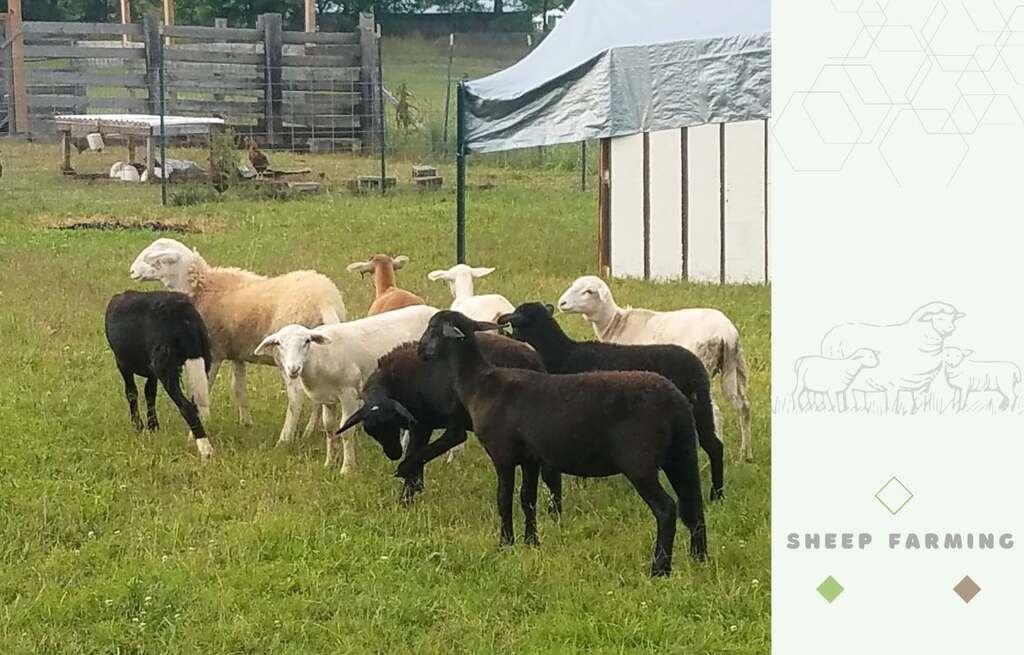
For lambs, you can feed them grass if available, creep feed, hay, and everything that comes from the ewe until weaning, which typically occurs around 2 to 3 months of age.
Afterward, you can continue to feed them the same diet of grass, creep feed, and hay. At 4 months of age, you can transition them to a diet consisting only of grass and hay, with a small daily quantity of 1/4 lb (0.12 kg) of grain.
Ewes in late pregnancy or lactation should also receive approximately 1 lb (0.5 kg) of grain daily along with some grass and legume hay if available.
In addition to these dietary considerations, they need access to a fresh water source to stay hydrated.
Feeding Katahdin sheep is straightforward and not at all complicated.
How many per acre?
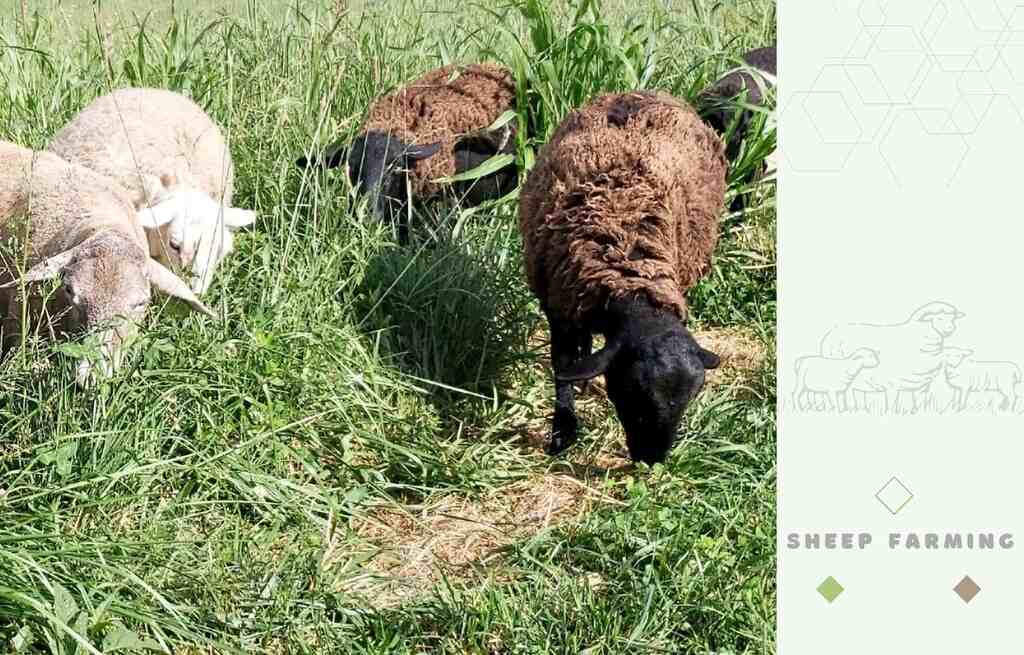
You can raise 6 to 8 Katahdin sheep per acre.
This number is also influenced by the level of vegetation available in the pasture.
If your pasture has a robust and abundant vegetation cover, it can sustain a higher stocking rate of 8 sheep per acre.
On the other hand, if the vegetation is less dense or of lower quality, it’s recommended to raise around 6 sheep per acre.
Careful consideration of the vegetation and its capacity to support your flock is key to maintaining the health and productivity of your Katahdin sheep.
Environment
These sheep can live in free environments such as pastures, grasslands, and various types of vegetation lands. In these open settings, they can freely graze and maintain their independence by feeding themselves.
But are also adaptable creatures and can be successfully raised within pen systems when necessary.
According to a study made by the University of Nebraska (see refs.), the environment and the growth rate of Katahdin sheep are not connected, as sheep have the same growth rate in both pen and pasture systems.
Climate
Despite their lack of wool, these sheep do very well in hot and cold climates.
During the winter months, they develop dense fur to insulate themselves from the cold, which they subsequently shed as summer approaches
Shelter
Katahdin sheep need shelter with hay bedding, even though they are hardy animals and can tolerate all climates. The shelter provides a safe space to relax and sleep while protecting them against predators.
It is great if you can have a shelter door that can be latched because this allows you to keep all sheep inside at night or during harsh weather.
Shelter is important for lambs, especially when lambing occurs in cooler temperatures. This keeps the lambs warm and comfortable immediately after birth.
You’ll also need an electric fence surrounding the entire pasture. While they may attempt to escape at first, once they become familiar with the fence, they will adapt to staying within their designated area.
Breeding
Breeding is so simple that all you have to do is place rams and ewes together and let them mate.
These sheep are exceptionally prolific, which can sometimes be challenging, especially for farmers with limited space or those who have already reached their desired sheep population.
Ewes reach sexual maturity at 8 months old; however, this does not mean they cannot become pregnant earlier. They begin cycling at 5 to 6 months of age and can easily have their first lamb.
When raising and breeding them, you must be cautious when introducing rams to the ewes.
Rams can begin breeding with both young and older ewes as early as 4 months of age. Since Katahdin sheep are capable of breeding year-round, this can quickly lead to an overwhelming situation.
A single ram at 4 months old can mate with 5 to even 8 ewes.
To avoid unintended breeding, it’s good to separate the rams from the herd at 3 months of age.
When you are ready for intentional breeding, reintroduce the ram to the ewe you wish to mate.
They can be bred twice a year, and they can cycle as soon as a month after giving birth. But it is recommended to breed them only once, as pregnancy can be hard on the ewe’s body.
The gestation period for Katahdin ewes is 5 months, and they typically have 1 or 2 lambs per pregnancy.
These ewes have great mothering skills and produce a high quantity of milk. They are capable of raising their lambs without the need for excessive human intervention.
Health Issues
Katahdin sheep are disease-resistant animals, and they rarely have health issues.
They are known for their exceptional resistance to internal parasites, even more so than other hair sheep breeds.
Tip: Allowing sheep to graze in the same field continuously can increase the chances of parasites. If possible, move them to different parts of the field and avoid returning them to the same spot for a month.
Their hooves do not require frequent grooming; once a year is sufficient. Also, since these sheep do not have wool, they are not prone to skin issues caused by external parasites like ticks or flystrike.
Why should you raise them?
First of all, Katahdin sheep are very easy to raise.
You do not need to spend much time grooming them or feeding them. Since they can eat and grow only with grass and hay, you do not even need to spend money on other supplemental feeds.
So, from both a time management perspective and a financial standpoint, they are great to raise.

They are a good match for:
- New farmers who do not yet have enough knowledge about raising sheep or handling them.
- Homesteaders who want a hobby and a good amount of meat without investing too much time or money.
- Large farms due to their adaptability and the fact that they do well in pens as well as in free environments.
Since these sheep do not have health issues too often, there is not much money to invest in them, except perhaps for vaccinations on large farms and occasional deworming.
The initial price as an investment can be a bit higher, though.
A Katahdin lamb has a price of $600 to $850, while a Katahdin sheep can cost $400 to $500.
But due to their prolificacy, you can easily recoup that money. Being able to reproduce easily throughout the year and produce one or two lambs per birth makes them great for meat production. Also, you can easily start selling lamb as well.
Overall, these sheep can be a profitable addition to your farm.
A and D
Advantages
- These sheep are low maintenance as they do not need to be sheared.
- They are disease-resistant.
- They are resistant to internal parasites.
- Great sheep for meat production.
- They are adaptable to various climates.
- They have good behavior and temperament.
- They are prolific.
Disadvantages
- They have a medium growth rate.
- They reproduce frequently.
- Their bodies are smaller than other meat breeds.
History and Origins
Katahdin sheep were the creation of a breeder named Michael Piel from Maine, United States. In the 1950, Michael Piel crossbred St. Croix sheep from the Virgin Islands with different breeds, including Suffolk, at his farm called Piel Farm.
He named the result of this crossbreeding “Mount Katahdin,” after the highest peak in the state of Maine.
The main goal of Michael’s crossbreeding efforts was to obtain a meat sheep that was disease-resistant and did not require shearing.
He achieved exactly what he wanted through the Katahdin sheep, as the Virgin Islands sheep contributed traits such as a protective coat, hardiness, and prolificacy, while the Suffolk breed brought improvements in size and carcass quality.
References
- University of Nebraska – Lincoln link
Do you have any experience with the topic discussed here?
Would you like to improve the information shared and contribute your practical knowledge on the subject?
Your real-world experience as a farmer or rancher could greatly benefit other members, and the community would deeply appreciate your contribution.


